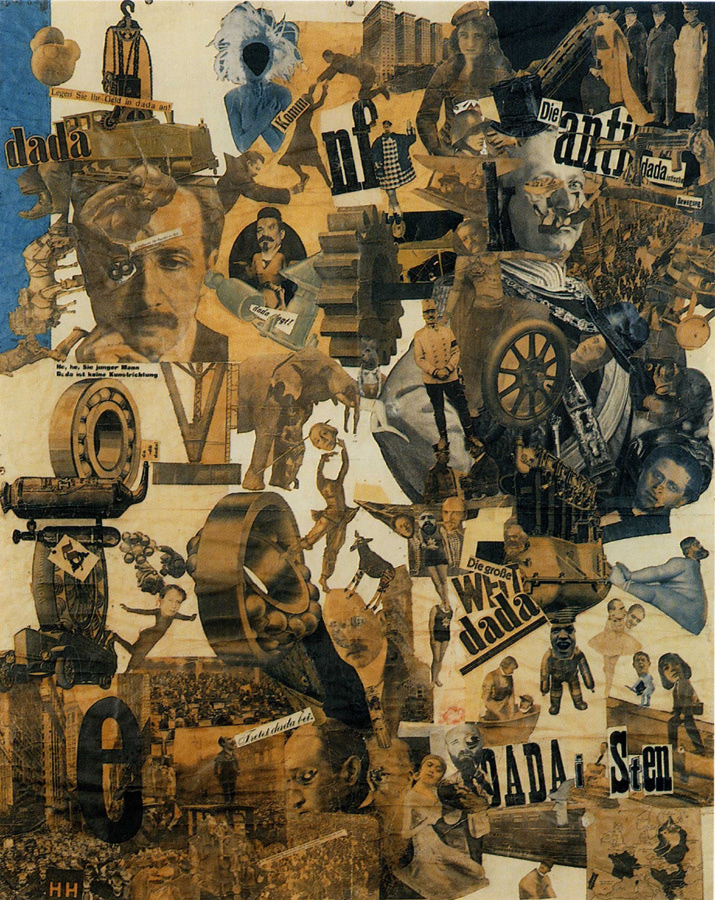Hannah Höch born 1st Nov 1889 was a German Dada artist. In 1912 she moved to Berlin to study embroidery, calligraphy, graphic art and wallpaper design. She was an important member of the Berlin Dada movement and a pioneer in collaging. Her early works was influenced by her time working in the fashion industry. Combining images together taken from magazines, fashion publications and illustrated journals she created humorous images. Many contemporary artists admired her works such as Theo van Doesburg, Kurt Schwitters and George Grosz. Höch was inspired by the collage work of Pablo Picasso.
Some of her works have been shown in solo exhibitions including Hannah Höch: Bilder, Collagen Hannah Höch, Kunstzaal De Bron, The Hague, (1929), Hannah Höch: Bilder, Collagen, Aquarelle 1918-1961, Galerie Nierendorf, Berlin, (1961) and Hannah Höch, National Museum of Modern Art, Kyoto, (1974).
In the early twentieth century, European Dadaism was tracing its way through photography and shadowing modernism. As a reaction to the First World War (1918), collaging allowed artists to experiment and interact with existing materials such as magazines, newsprints, tickets, maps and photographs. Ripping and cutting them apart and reassembling them back together in order to create a piece of work visually dynamic. Her photo-montages are unique and interesting however some of her images come across confusing due to the montages being extremely busy. “Cut with the Kitchen Knife: Dada Through the Last Weimar Beer Belly Culture Epoch (1919)” is Höch’s most famous piece of work. It was exhibited in the International Dada Fair in 1920 and is one of her largest collages.

In this particular piece of work Höch has included industrial landscapes, figures of cultural and political importance, animals and newspaper headlines. She has used the ‘kitchen knife’ to symbolise her cutting through the male dominated society of the times. Höch has made the collage by dividing her cut out images into ‘Dada’ and ‘anti-Dada’ sections. She has purposely named these sections to enhance the message of her concept. This allows the viewers to interpret which part of the collage portrays the most strength in the new Republic. Although Höch has carefully constructed and planned her collage, it can come across as unorganised to the viewers. There are few empty spaces, which encourages the viewers to engage in every part of the collage. When looking at the ‘rule of thirds’, it could be said that each third holds an equal part of importance towards the making of the overall piece. It is not clear whether the collage was cropped after it was created or if the individual images used were cut to fit the edges. Höch has used a range of warm, earthy colours with brown dominating the collage. The murky shades of brown combined with the use of black could be representing sadness, fear and power. As this work was made after the War the slight use of blue in certain areas could be associated with stability and faith.
I find this piece inspirational due to the amount of work that has gone into this piece. She has intensively used the collaging technique as appose to only a few layers in certain parts of the piece.